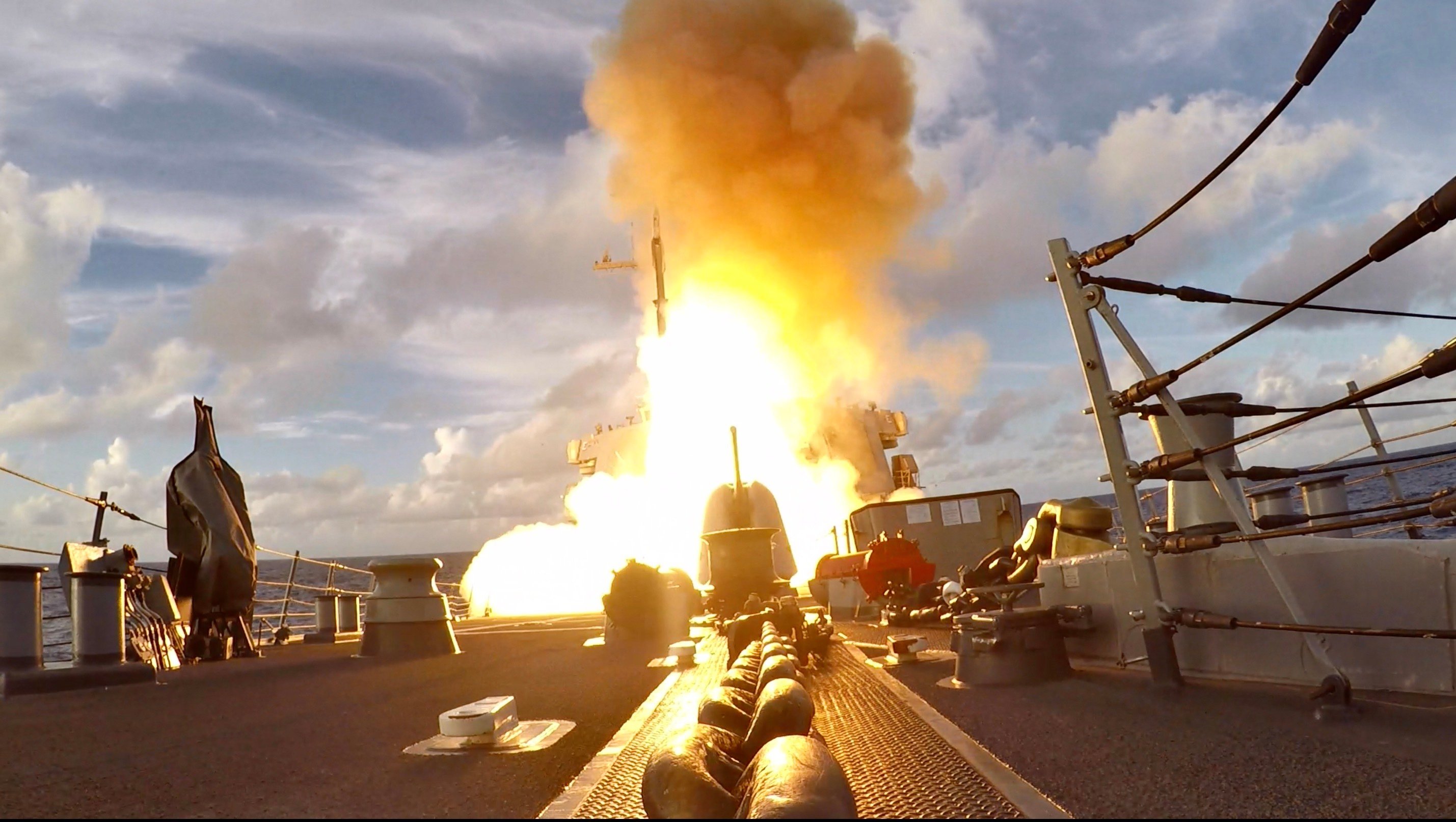
The U.S. military will perform a live fire test of its prototype for a joint fires network in the Valiant Shield exercise later this year, a top official told lawmakers this week.
Adm. John Aquilino, the commander of U.S Indo-Pacific command, described the plans during written and verbal testimony in front of both the House and Senate armed services committees.
“We’re going to provide some insights into the further development of [Combined Joint All-Domain Command and Control] as it goes forward,” Aquilino told the Senate Armed Services Committee on Thursday.
Aquilino pointed to the Global Information Dominant Experiment exercises – led by Deputy Secretary of Defense Kath Hicks – as one of the ways the joint force has been working on CJADC, which is the Pentagon’s plan for commanders to direct forces in unison even if traditional communication is blocked or destroyed.
“I’m going to produce a prototype – if you will – that will be demonstrated in our next big exercise this year to see where we are, what we’re doing, is it right, is it at scale,” he said. “We’ve also pulled in what [U.S. Central Command] has been doing, and we’ve pulled in what Gen. [Christopher] Cavoli’s been doing in [U.S. European Command] in support of Ukraine.”
In his written testimony to the committee, Aquilino identified Valiant Shield as the exercise. Valiant Shield is a biennial U.S. exercise that takes place around Guam with participation from the Navy, Army, and Air Force.
During Thursday’s hearing, Sen. Mike Rounds (R-S.D.) voiced concern that each service’s respective efforts to build a command-and-control network could make for a siloed approach to a problem that the entire military will need to solve in any conflict.
“The services are doing some good work to figure out how to close and maintain the ability through a kill web mechanism to close their kill chains,” Aquilino told Rounds.
“From the combatant command perspective, we don’t do anything in stovepipes. We fight as a joint force,” he continued. “So the approach we’ve taken with the joint fires network is to pull together a best-of-breed approach of Project Convergence from the Army, Overmatch from the Navy and Marine Corps, and then [Advanced Battle Management System] from the Air Force, along with the DARPA aspect of Assault Breaker II – to pull all those together, and deliver a real, near time best of breed solution to be able to command and control the joint force and ultimately close the kill chain.”
For the last several years, the services have each been working on respective efforts to connect sensors with shooters that feed into the Pentagon’s overall CADC2 initiative.
Aquilino was on Capitol Hill this week testifying about U.S. Indo-Pacific Command’s posture and answered questions about both the region and his command’s annual unfunded priorities list for Fiscal Year 2025. This list totals $11 billion, which is more than triple the cost of last year’s $3.48 billion unfunded list. Like last year’s list, this year’s ranks a Missile Defense System for Guam as the highest priority.
During the same hearing, Sen Dan Sullivan (R-Alaska) disclosed the dollar number – more than $700 billion – that the Defense Intelligence Agency and the Director of National Intelligence believe China is putting toward military spending. China’s Ministry of Finance earlier this month put out a report saying it’s spending 1.67 trillion yuan, or $231 billion, on defense spending in 2024. The Ministry described that figure as a 7.2 percent increase from the prior year, but Aquilino said he believes China is putting more than that toward military spending.
“I don’t know if I have an estimate,” Aquilino said of what China’s producing from military spending. “Again, I don’t even know if it’s worth comparing. The issue is what’s coming off the assembly line and it’s significant at 10 warships, high-end warships alone this year, cruisers, destroyers, full rate production for J-20s, increased missile systems, satellite systems. To me, that’s the metric.”





